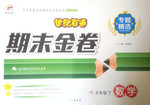题目内容
___ the machine’s enormous size, it runs smoothly and noiselessly.
A. For good B. For ever
C. For all D. For sure
练习册系列答案
 世纪百通期末金卷系列答案
世纪百通期末金卷系列答案
相关题目
题目内容
___ the machine’s enormous size, it runs smoothly and noiselessly.
A. For good B. For ever
C. For all D. For sure
 世纪百通期末金卷系列答案
世纪百通期末金卷系列答案